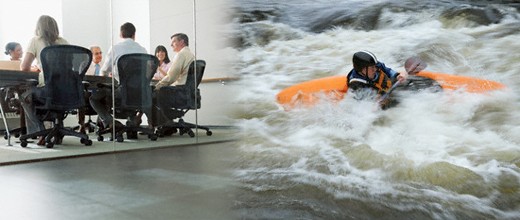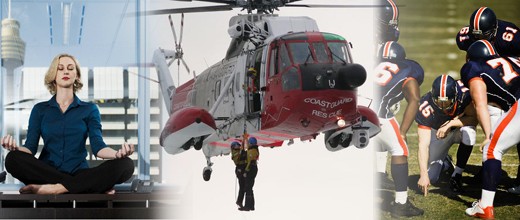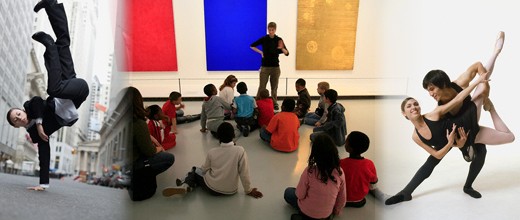Website sections:
Current section's content:
- You Can Manage and Program Creativity
- Creative Abilities and Creative Thinking Skills Management
- Briefly About CreativityModel Method Usage
- CreativityModel Method Usage Opportunities and End-User License Agreement
- Current Version of CreativityModel Method
- CreativityModel Method Abstract
- CreativityModel Method Version Changes
- CreativityModel Method Glossary
- Explanation of the Method's Component Parts and How the Component Parts Interact
- Explanation of How the Method's User Achieves Results
- CreativityModel Method - Generate Dots, Connect the Dots
- CreativityModel Method Usage Areas
- The Artist in You
- Growth of the Artist in You
- The Result Getter in You
- Applying the Result Getter in You
- About Choice Supported Creativity Usage
- The Problematic Side of Business Creativity
- Creativity Management and Business Creativity
- Sales CRM Software Development Example
- Why Does Creativity Management Matter and What Can You Do About This?
- Goal Oriented Creativity Management and CreativityModel Method
- Goal Oriented Creativity Management and Your Personal and Professional Life
- Teenager, Version 1 - Confusion
- Teenager, Version 2 - Career Development and Life Management
- Managers, Version 1 - Zigzagging Business Development
- Managers, Version 2 - Innovation Management and New Product and Service Development
- The President, Version 1 - Some of It Did Happen
- The President, Version 2 - Self-Expression, Conflict Resolution, Creativity and Leadership
- CreativityModel Method Development Background
- Further Development of CreativityModel Method




















CreativityModel Method - Generate Dots, Connect the Dots
For years I felt that computer usage helps me to be more creative. This motivated me to search for answers to questions, like, how does human creativity work, and especially when computer usage is involved? How do the underlying processes work and can I learn to use them somehow systematically, on demand, when I want to do so, with or without using a computer?
Further, are these kinds of creative processes something that is characteristic to me and perhaps to a small number of other people, or is here also something that is likely to pertain to most of the people?
Professionally, I have documented some pretty complex information flows and workflows, and also built computer application functionality based on these specifications. So, I was also wondering, if it is possible to document human creativity similarly to documenting business transactions related subject matters and information flows and workflows.
If so, what would the outcome look like?
Equally importantly, given that the outcome can be used for explaining different type of creativity usage instances and processes, what would I do with it?
It turns out that documenting human creativity in a way described above is possible. The process was very complex. Without any precedent to go by, developing this project from scratch was a true challenge. It took me more work, effort and time than I like to admit.
I named the outcome CreativityModel Method.
So, what is CreativityModel Method? Who and how can benefit from it?
This article sheds some light on these topics.
Contents
- What Is CreativityModel Method?
- How Does CreativityModel Method Work?
- CreativityModel Method Usage Learning and Training
- CreativityModel Method Usage Related Limitations and Potential
- Who Can Potentially Benefit From CreativityModel Method?
- Avoiding Creating Problems For Yourself and For Other People
- Comparison to Creativity and Problem Solving Techniques
- CreativityModel Method Availability
- CreativityModel Method Development Background
- Further Development of CreativityModel Method
What Is CreativityModel Method?
CreativityModel Method is a creativity management method that addresses both self-expressive creativity usage and goal oriented creativity usage.
To put it differently, CreativityModel Method usage helps to manage, that is, knowingly and consciously control, arrange and direct usage of self-expressive and goal oriented thinking.
Self-expressive, choice supported creativity is typically associated with artistic creativity. Goal oriented creativity is prevailing in business environment and in most other professional environments, and can also be beneficial in other areas where goal and objective setting and achieving are important, like career development and life management.
The two types of creative approaches can be used in combinations and are addressed from creative thinking skills management perspective.
Skills can be learned and trained. Similarly, it is highly likely - but not yet proven - that creative thinking skills and their management can be learned and trained within individual person's abilities, expertise and experience.
How Does CreativityModel Method Work?
Everything that you do that requires creative development efforts involves a theme, goals, structure and content components. Observe your circumstances and actions and see for yourself, whether or not this is true.
If you need more information on these four elements, they are further defined in CreativityModel Method's Glossary.
You can take apart these elements - the theme, goals, structure and content components - reassemble them in different ways, using characteristics, actions that can be taken and project specific rules. You can also work with the project specific rules and requirements in a somewhat similar manner.
You can do this as thinking processes, and you may also be able to do this at least in a somewhat more tangible way, especially when you are using a computer.
In CreativityModel Method context every undertaking that requires creative development efforts is called a project.
Project specific rules and requirements apply to most projects.
All the projects that require creative development efforts have project development stages that are the same. The projects may seem vastly different, the outcomes can be very different, but CreativityModel Method usage related project development stages and their principles are the same.
In each case, you want to put together your project's structure by either using goal oriented creativity principles, or choice supported creativity principles (both are described briefly below). You can mix these two creativity usage approaches in many ways, but for the development of a project's structure you should use one of the two creativity management approaches.
So, here's a question that is relevant to many situations. How to proceed: is there something that you need to achieve, or should you proceed self-expressively?
If in doubt, use goal oriented creativity because it tends to be helpful most often.
In situations where you think that you are both expressing yourself and need to achieve something, well, one of the two creativity management approaches should take priority over the other.
As is stated above, whenever you do something that requires creative development efforts, certain elements are involved - goals, theme, structure and content components. This is the material from which you build the outcome.
Goal oriented creative approach: Identify, what do you need to achieve. Establish the goals, the end point that you need to achieve, the structural parts that will take you there, and thereafter choose your first step.
This is your "base structure" or "default path" that contains steps that you can implement "by default" unless better alternatives emerge. So, anticipate need for changes and remain flexible.
How much planning you need to do upfront depends on the implementation team's level of project specific expertise and on the level or risk tolerance. That team may be you, or it may contain you and/or other people.
- What needs to be done right before achieving the goals? What's the structural part before that? Don't start with "what's the first step?" That's a convenience trap. That's how the problems start. You need to figure out the structural parts of the path to where you want to go, starting with the goals and proceeding from there toward the starting point. Thereafter proceed with the first step.
- The structural parts of what you do should not be written in stone. You can make changes as needed, but if you need to set and achieve goals or objectives, identify an optimal path that can take you where you want to be and then proceed, step-by-step, by using your (and other participants) judgment. Within your goal oriented structure you can and should use choice supported creativity for generating alternative ways for reaching each step or milestone goals or objectives.
- The gist of it is to learn to put together sufficiently complete paths from start to completion, but from the goals perspective, not from the starting point's perspective (you don't need to achieve the starting point, you need to achieve the goals). This is what makes the planning portion's results effective and efficient. Flexibility and choice supported creativity usage within the goal oriented structure makes the implementation effective and efficient.
Choice supported creative approach: What is this about, that is, what's the theme and how do you describe it? What do you want to say about this theme? Generate your own opinions on the theme.
- Continue by representing what's in your mind through what you do. Whenever you are uncertain about how to proceed, if you can proceed by trial and error, pool together alternative elements. As starting points, element fragments may do as well. Break apart and connect elements in different ways through their characteristics and actions that can be taken, generate and add elements, relate the results through the theme and structure, and test the results.
- You can learn to generate a structure for whatever you do based on the theme, and content based on the theme and structure. This way you can achieve good quality outcomes with less work. You can also learn to combine randomly generated content into coherent outcomes.
- The gist of it is to learn to see everything as clusters of components that you can break down and connect in different ways through theme and goals, by adding, modifying and deleting elements. In many instances the connections between the new components are based on their characteristics and the actions that you can apply to the components.
- There are other aspects and areas as well that either directly or indirectly influence these processes. Playing around with the components is one of the key areas that can lead to creative and innovative outcomes.
This is the big picture. On a more detailed level things do get more complicated, but managing the elements well on the big picture level can also be very helpful.
CreativityModel Method Usage Learning and Training
It is likely, that you can train yourself to handle CreativityModel Method principles and the necessary steps faster and with less effort. To put it differently, it is likely that you can train yourself to manage your goal oriented and self-expressive creative thinking skills consciously and more effectively, so that you will get results faster and with less effort.
CreativityModel Method usage means to know how to
- Use both goal oriented creativity and choice supported creativity separately and in combination.
- Spot quickly, when to use goal oriented creativity and when to use choice supported creativity for structure building purposes.
- Alternate, as quickly and as often as needed, between the usage of goal oriented creativity and choice supported creativity for theme and goals selection, pooling, component and structure building purposes.
- Spot quickly, what information is needed (and getting the needed information is, of course, important, too).
- Do pooling quickly, and so, that different solutions are available long enough (for example, stay fresh in mind, or are usably stored in a computer file).
- Learn to handle project specific rules similarly to handling project elements.
- Assemble quickly optimal solutions, discarding the unnecessary elements.
All of this can be trained, especially, when training is set up so that different areas receive individual attention on as needed bases.
Being a trainer, including training your own creative thinking skills, should start with good understanding of how the material that you intend to use works. To put it differently, if you are interested in using CreativityModel Method principles for training purposes, then of course you would want to start with becoming very familiar with how CreativityModel Method works.
As far as individual person's training is concerned, my recommendation is to identify the areas that require attention and to put together training material that addresses the needed areas. Ideally, the training material should produce measurable, valid and reliable results. Using such material, baselines should be established and the results should be measured and compared to the baselines and to the previous results.
I'm not trying to say that this is super easy to do, but it certainly is doable and the results can very well be worth the efforts.
Putting efforts into CreativityModel Method training material creating probably makes sense if you intend to use the training materials professionally. However, you can create such material for your own purposes as well.
Further, it probably makes sense to start any CreativityModel Method usage learning and training efforts so, that relatively small time and energy investments are required, and to proceed step-by-step. If the initial steps produce positive results, there is more reason to proceed. If not, problem areas should be identified, changes should be made, or it may turn out that the process is not worth the efforts. Everything CreativityModel Method related is in a startup stage, so, I do not want to imply any guarantees. But the potential payoff can also be worth the efforts and risks involved.
CreativityModel Method Usage Related Limitations and Potential
There are couple of basic CreativityModel Method usage principles to keep in mind.
- On one hand, CreativityModel Method can help you to achieve relevant results effectively and efficiently within your individual sets of abilities, experience and expertise.
- You can push the boundaries through expanding the abilities, experience and expertise, but there are always boundaries.
- CreativityModel Method usage is about producing good quality results within these personal boundaries.
- On the other hand, often it is the case, that it is not so much the potential that a person has, but how he or she uses that potential, that can lead to success in life.
- CreativityModel Method usage is about your getting closer to optimizing the potential that you have at any given point in time.
Creativity usage results don't have to be perfect, to be good. Your personal creativity usage results are part of your personal development process, and if they keep getting better, that's also valuable.
For example, I am not a particularly creative person, but I use CreativityModel Method and get done, what I need to get done. This includes website content writing, computer software development, user interface design and many other kinds of tasks.
Who Can Potentially Benefit From CreativityModel Method?
Goal oriented and self-expressive coherent outcomes. CreativityModel Method focuses on development of coherent outcomes from elements that can be generated and added either in a coordinated fashion or in random order.
So, CreativityModel Method usage can be beneficial when a coherent outcome needs to be put together that is either goal oriented or self-expressive in nature.
Number of people, and possibly growing numbers of people especially among the younger generations, have difficulties with connecting individual components into coherent outcomes. Technology usage and digital media, while immensely helpful, may be contributing to some aspects of this phenomenon.
CreativityModel Method usage helps to generate coherent outcomes, whether the project is small or large.
Everyday creativity, life development and career management. CreativityModel Method principles can be used as a support structure, in combination with countless everyday personal and professional undertakings. CreativityModel Method principles can also be used for setting and achieving long-term personal development objectives. Usage of CreativityModel Method principles can help a person to grow in new and previously relatively unfamiliar areas.
Doesn't this describe, in a way, most of life development and a big portion of career development as well?
We cannot know everything, but we can build structures in areas that interest us, research options for completing individual objectives, and in the process learn selectively what is needed. This type of processes help to grow and extend the personal experiences and expertise levels.
I have found CreativityModel Method principles to be helpful for finding continuity and meaning in different circumstances, including disruptive conditions, and for generating the personal and professional best outcomes individually and in team environment.
Training and consulting. Other CreativityModel Method usage opportunities and areas range from training of artistic self-expression skills to training creativity usage in business and other professional environments, and in innovation, new product and service development and other business management related areas. The latter areas rely heavily on self-expressive creativity usage within goal oriented creativity based frameworks.
Programmability. Based on my work in this area, I can say that CreativityModel Method is at least partially programmable as well. I used this Method experimentally for generating "intelligently" responding functionality. Comparatively speaking, such functionality can be created with less resources than artificial intelligence engineering and expert systems require, which are hugely resource consuming to build.
CreativityModel Method based functionality also works differently. To me it reminds the difference between "push and pull marketing." Based on my knowledge of expert systems I would say that these applications function more by "pushing the solution through." CreativityModel Method based functionality that I built experimentally helped to "pull" the solutions together by utilizing the application user's existing knowledge and by helping to identify what additional information may be needed.
However, these are just one person's observations. Other people may come up with better solutions.
So, computer application developers and users can also potentially benefit from CreativityModel Method.
Additional opportunities. If and when CreativityModel Method will be developed further, other and better usage options for this Method may emerge than what I'm describing here.
Avoiding Creating Problems For Yourself and For Other People
In addition to what can be developed into outcomes by using CreativityModel Method principles, there is another side to this Method's usage - avoidance of problems that mismatched creative approaches can create. Addressing this topic may not help to popularize CreativityModel Method, but I do believe that it is important.
Some people are better at using self-expressive creativity, other people at using goal oriented creativity. Relatively few people are equally good at using both types of creative thinking skills. Based on my observations it seems to be the case that people also use more often these creative thinking skills that they are better at.
In many instances we cannot control our circumstances and what happens (to us), but we can train ourselves to control our consequent responses - and also how we use our creative thinking skills and actions.
Problems start when a person proceeds self-expressively in circumstances where goal oriented creative thinking skills should be used. In such instances it is likely that the impact of the actions is negative. This applies to, for example, career development and life management and to other aspects of personal and professional life. Equally well, this applies to organizational behavior and business management and leadership, and, for example, to politics, from individual politicians to leading a coalition of countries to war. The bigger sphere of influence a person has, the bigger the impact.
The other way around, proceeding by using goal oriented creativity in circumstances where self-expressive, choice supported creative thinking skills should be used, leads to poor outcome, too. Unimaginative, dull, cookie cutter results are generated this way.
Using creativity management approaches incorrectly leads to less than adequate results ranging from poor quality outcome to creating problems. This principle seems to work rather reliably, like some sort of a "law of nature."
Comparison to Creativity and Problem Solving Techniques
CreativityModel Method is not a creativity technique or a problem solving technique. CreativityModel Method is meant above all for putting together goal oriented and self-expressive coherent outcomes. Any number of creativity and innovation techniques and problem solving techniques and methodologies can be used while developing a project by using CreativityModel Method principles.
CreativityModel Method does not focus on cognitive or other types of abilities management, training or enhancement. CreativityModel Method is meant for managing individual self-expressive and goal oriented creative thinking skills, that is, learned capacities to carry out pre-determined results.
CreativityModel Method Availability
CreativityModel Method is available under Creative Commons license and is free for personal, professional and business usage worldwide. Currently, CreativityModel Method is available on ProjectDeveloper.com and as a PDF file.
CreativityModel Method Development Background
CreativityModel Method is based on observations. The approach that I used for putting CreativityModel Method together is somewhat similar to documenting subject matters and information flow (workflow) in IT business analysis cases for complex applications. For project specific rules I used US patent application filing guidelines.
There are very good books (and articles) on creativity related material, but the ones I am familiar with do not describe creativity usage as processes, so that these processes can be observed and documented. I found documentaries to be most helpful in this context.
In the end of the CreativityModel Method Development Background article, I listed some of the documentaries and movies that I found most useful.
Most of CreativityModel Method is based on introspective observations. After completing this work, I watched hundreds of documentaries and movies that describe different aspects of creative development processes, analyzing what I saw and CreativityModel Method as objectively as I could, and asking myself "As version 1 framework, does this Method work? What needs to be changed?"
Further Development of CreativityModel Method
I'm using CreativityModel Method and am benefiting from it. However, at this point CreativityModel Method is an unproven invention. In order for this Method to succeed, it has to be turned into an innovation. That is a resource consuming process.
CreativityModel Method has several rather significant potential usage areas. However, until the current version of CreativityModel Method has not been validated, all of it remains "iffy."
I have put a lot of work into CreativityModel Method development, and that work has benefited me proportionately as well. At this point I have decided to use my time and resources on other projects. Accordingly, I have decided to put further development of CreativityModel Method on hold, until I find other people who are both well qualified and interested in continuing this work.

